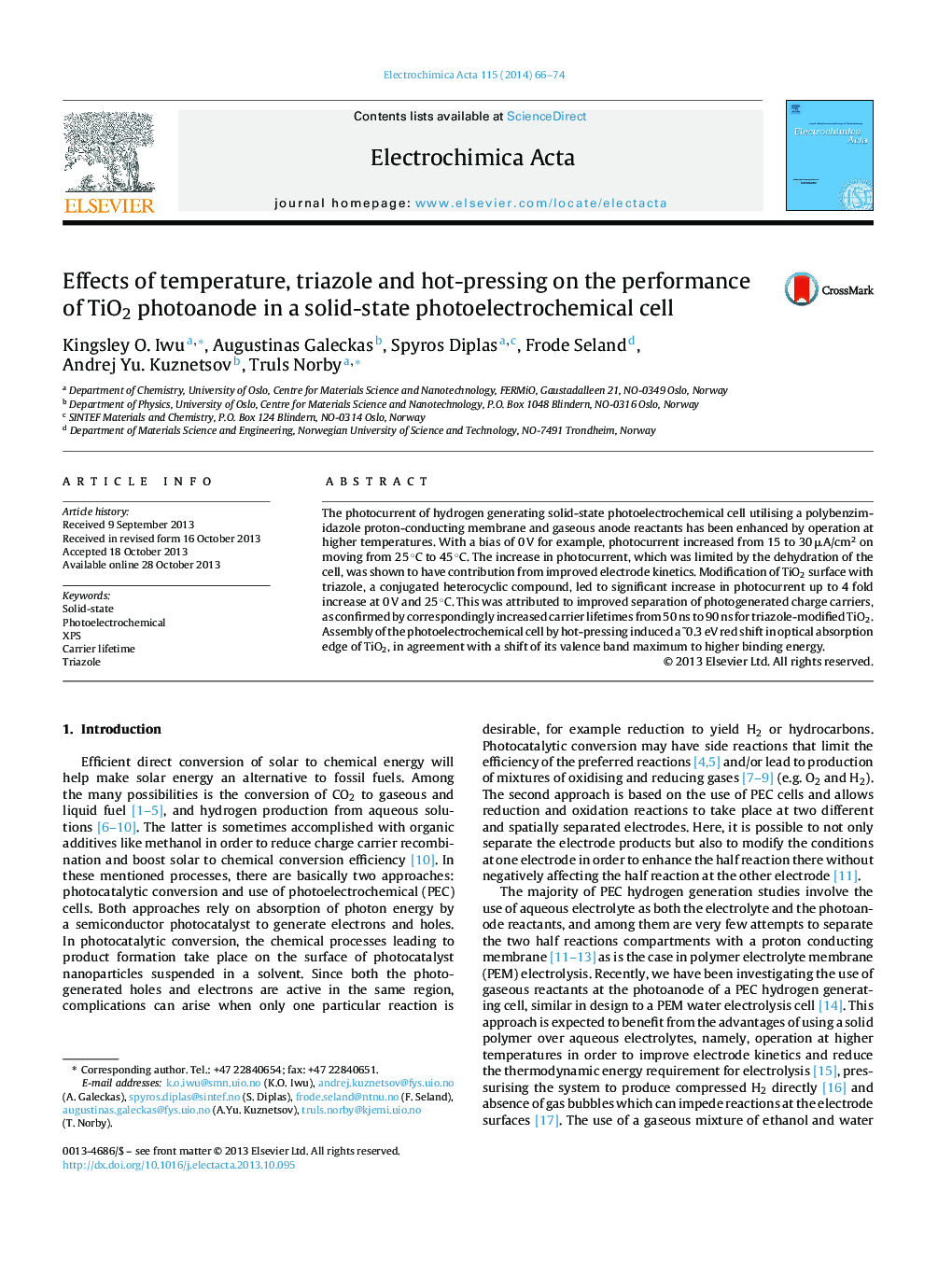| Article ID | Journal | Published Year | Pages | File Type |
|---|---|---|---|---|
| 6614070 | Electrochimica Acta | 2014 | 9 Pages |
Abstract
The photocurrent of hydrogen generating solid-state photoelectrochemical cell utilising a polybenzimidazole proton-conducting membrane and gaseous anode reactants has been enhanced by operation at higher temperatures. With a bias of 0 V for example, photocurrent increased from 15 to 30 μA/cm2 on moving from 25 °C to 45 °C. The increase in photocurrent, which was limited by the dehydration of the cell, was shown to have contribution from improved electrode kinetics. Modification of TiO2 surface with triazole, a conjugated heterocyclic compound, led to significant increase in photocurrent up to 4 fold increase at 0 V and 25 °C. This was attributed to improved separation of photogenerated charge carriers, as confirmed by correspondingly increased carrier lifetimes from 50 ns to 90 ns for triazole-modified TiO2. Assembly of the photoelectrochemical cell by hot-pressing induced a ̴ 0.3 eV red shift in optical absorption edge of TiO2, in agreement with a shift of its valence band maximum to higher binding energy.
Related Topics
Physical Sciences and Engineering
Chemical Engineering
Chemical Engineering (General)
Authors
Kingsley O. Iwu, Augustinas Galeckas, Spyros Diplas, Frode Seland, Andrej Yu. Kuznetsov, Truls Norby,
